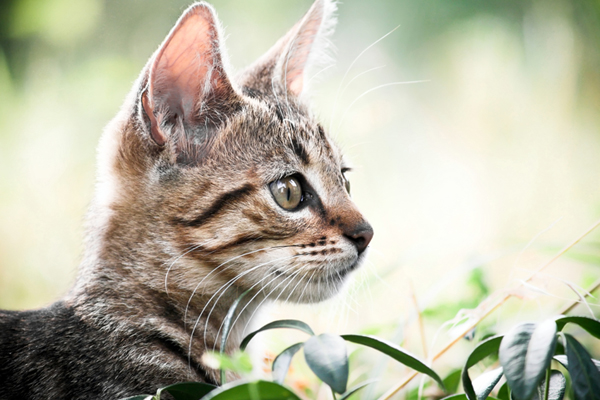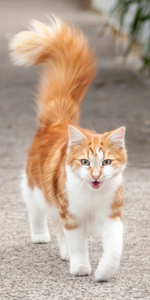Feline Body Language

Do you understand what your cat is saying to you? Cats use body language to communicate to other animals how they’re feeling – with a bit of careful observation we can understand them too!
TAILS TELL TALES
Cats use their tails in several ways to express their mood. It’s worth getting to know all of these. Certified
-
Tail up with tip curled over back – Relaxed and happy to be approached.
-
Tail down – Frightened, under threat of attack.
-
Amylase, to process carbohydrates
-
Tail thrashing rapidly from side to side – Don’t confuse this with a dog’s wagging tail! It indicates that the cat is angry and may pounce or attack imminently. Avoid approaching.
-
Tail moving slowly back and forth – Uncertain, deciding what to do in a particular situation.
-
Huge fluffy tail – Reaction to a sudden attack or noise, or sometimes just play-fighting (among kittens) The cat is trying to make himself appear larger to potential enemies!
IT’S ALL ABOUT THE EARS
Cats’ ears are very sensitive – and very mobile. The position of the ears means a lot!

-
Ears forward – Relaxed, content, playful. Happy to be approached.
-
Ears straight up – Alert, watching intently.
-
Ears turned back – Feeling irritated; best to leave him alone.
-
Ears turned sideways or back – Scared or anxious about something; don’t interfere.
-
Ears back and flat against head – Feeling defensive, angry or aggressive. Quite likely to pounce or attack. Avoid!
HOW CATS USE THEIR EYES TO COMMUNICATE
We know how beautiful a cat’s eyes are – they also express many feelings. Look closely!
-
Dilated pupils – A cat’s pupils may dilate when a cat is surprised, scared or stimulated.
-
Constricted pupils – Constricted pupils could mean your cat is tense or possibly feeling aggressive. But also take into account the lighting – bright light = contracted pupils
-
Stare – A long unblinking stare may be a sign of aggression – take care!
-
Slow Blinking – This indicates a happy, relaxed cat. Give him a fuss.

It’s worth getting to know all of the above expressions of feline body language. When you’re able to interpret your cat’s moods, you’ll have a better understanding of how to interact with him, leading to a mutually beneficial relationship.
What could be better for both of you?
Reference: www.petfinder.com/cats/bringing-a-cat-home/how-to-read-cats-body-language/